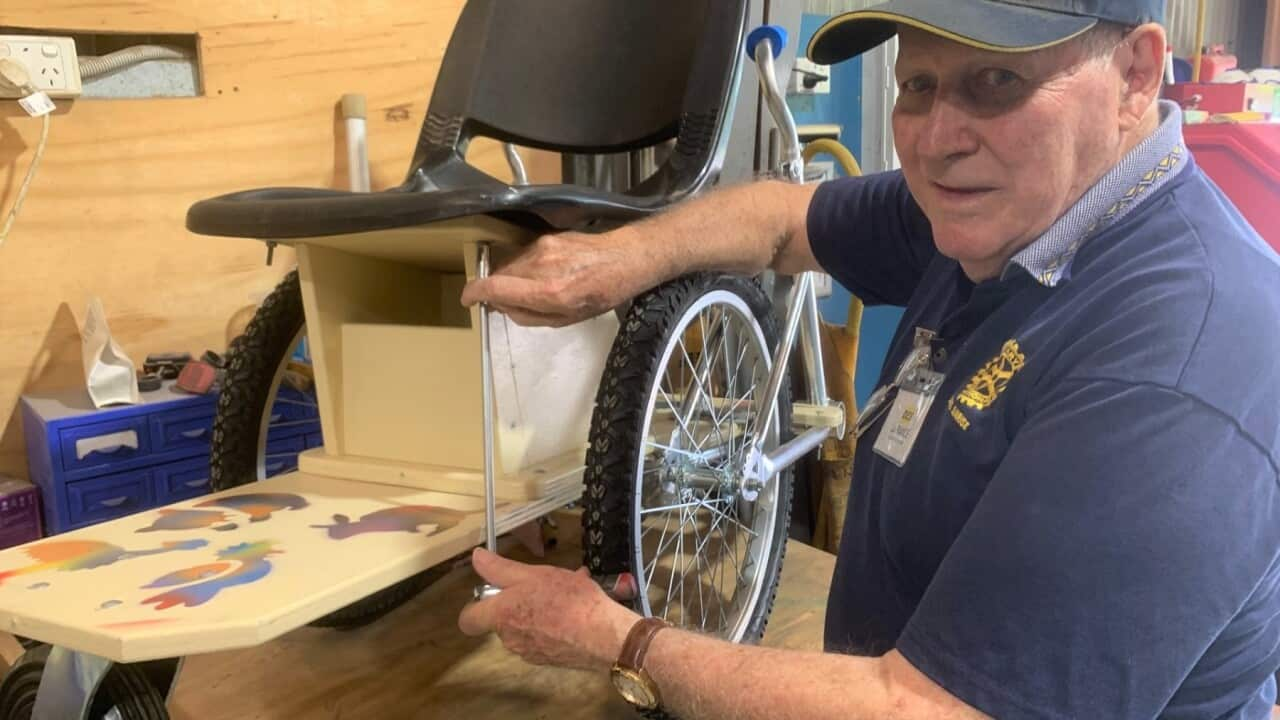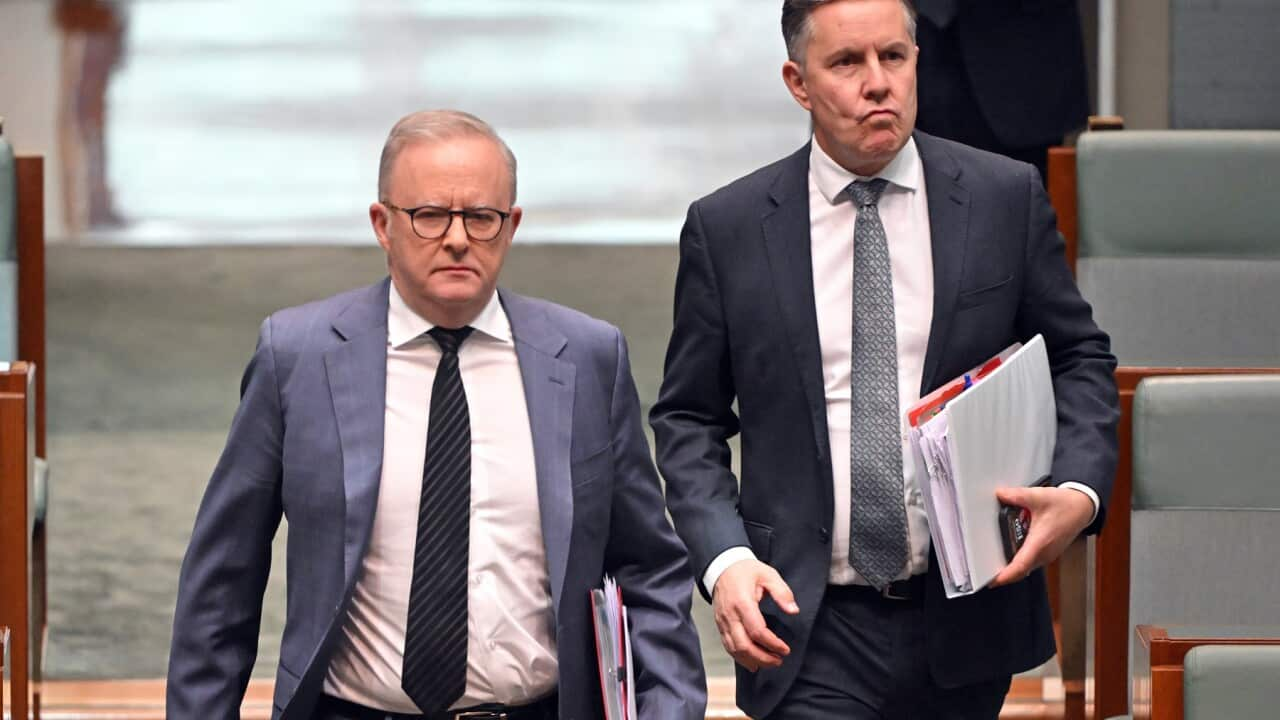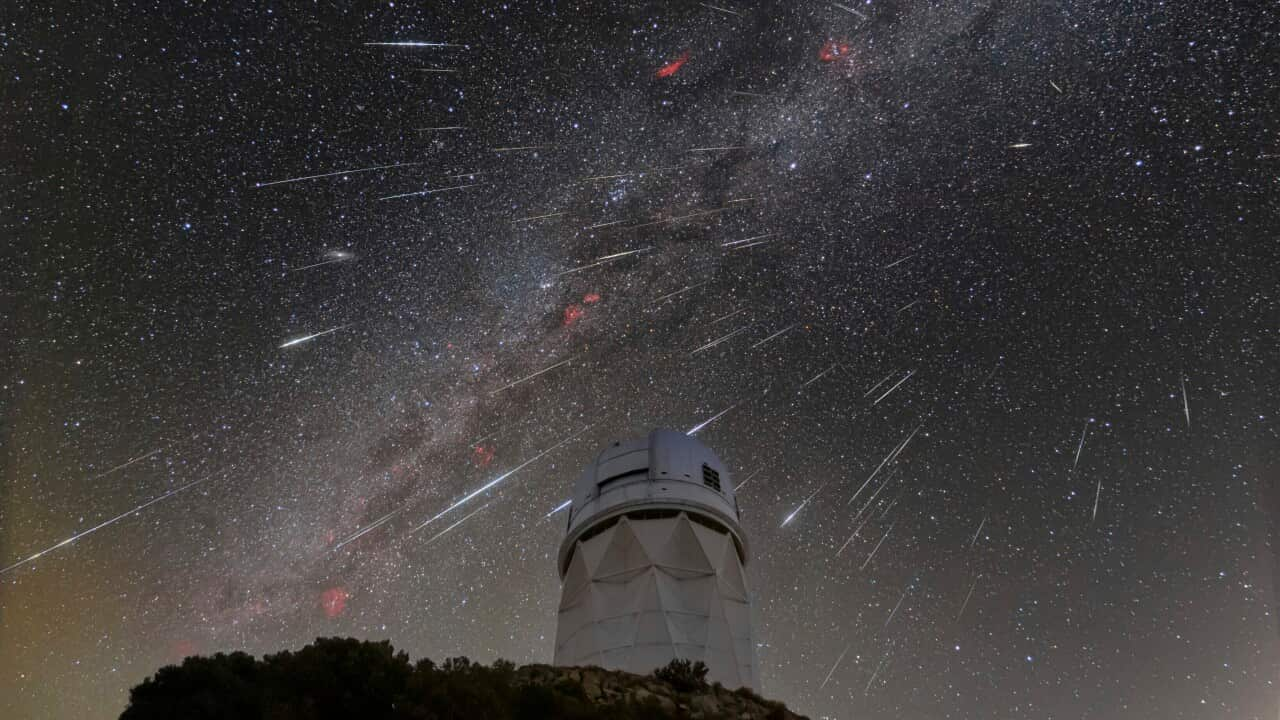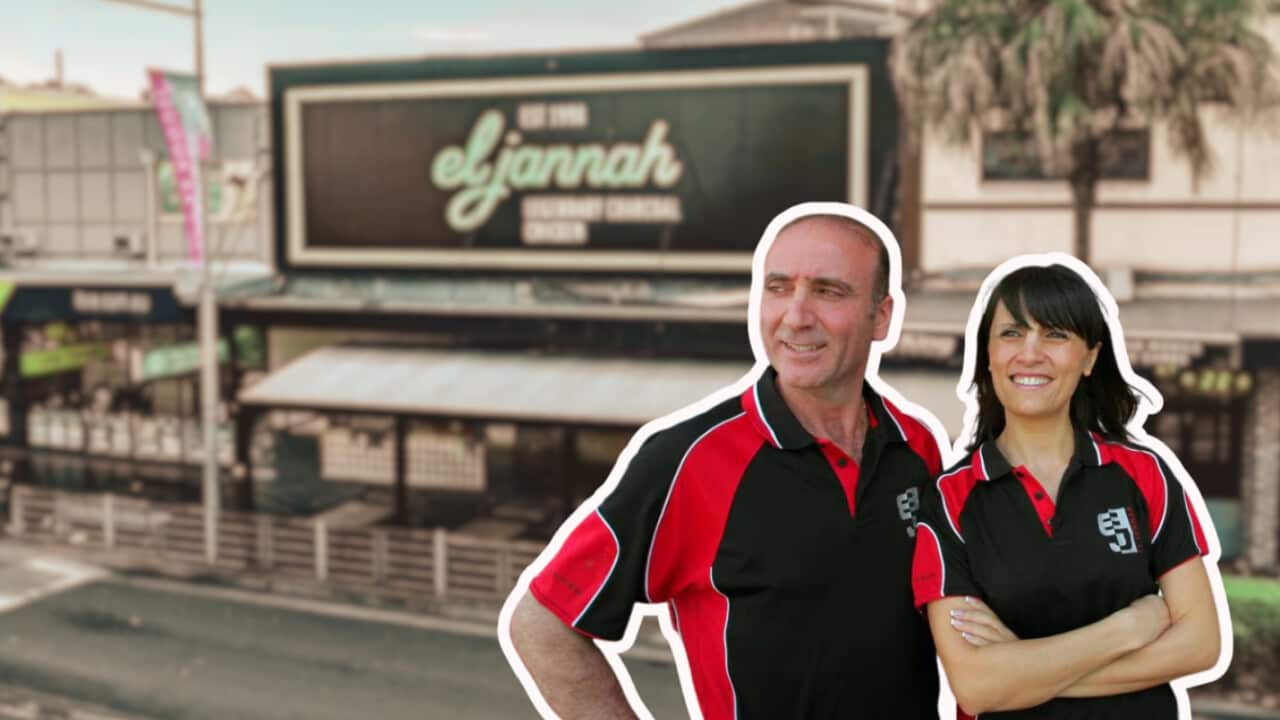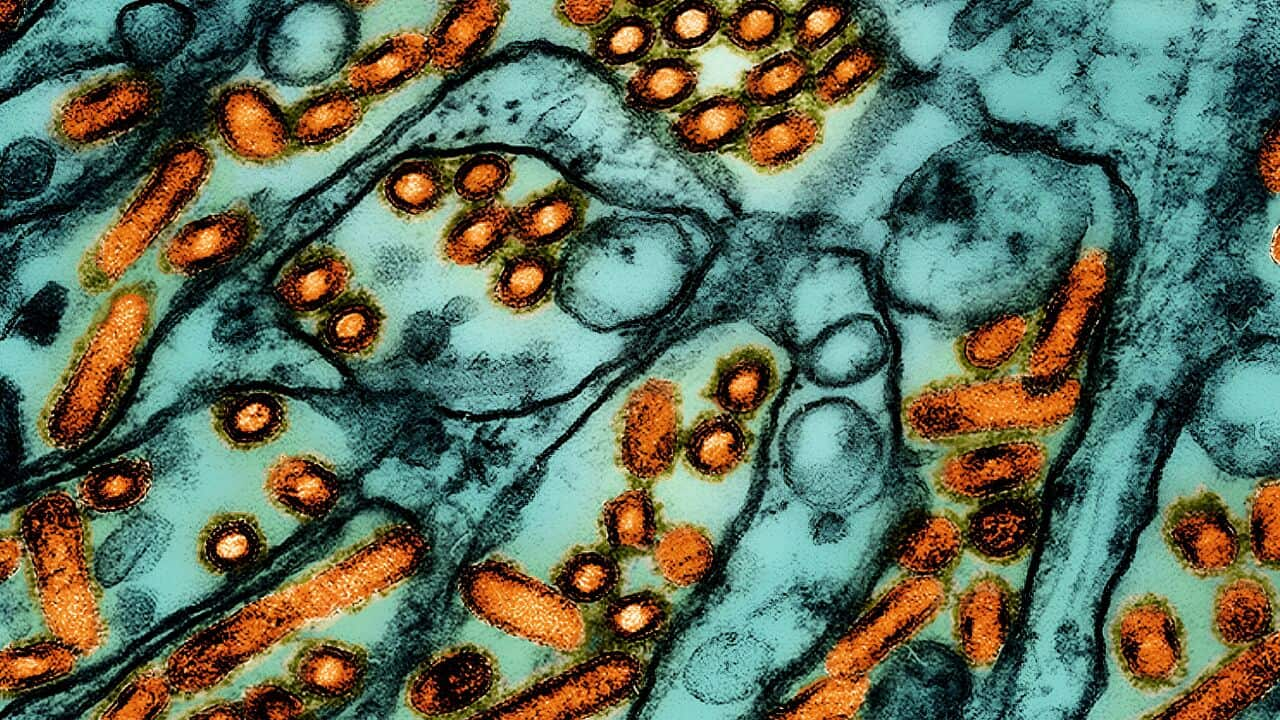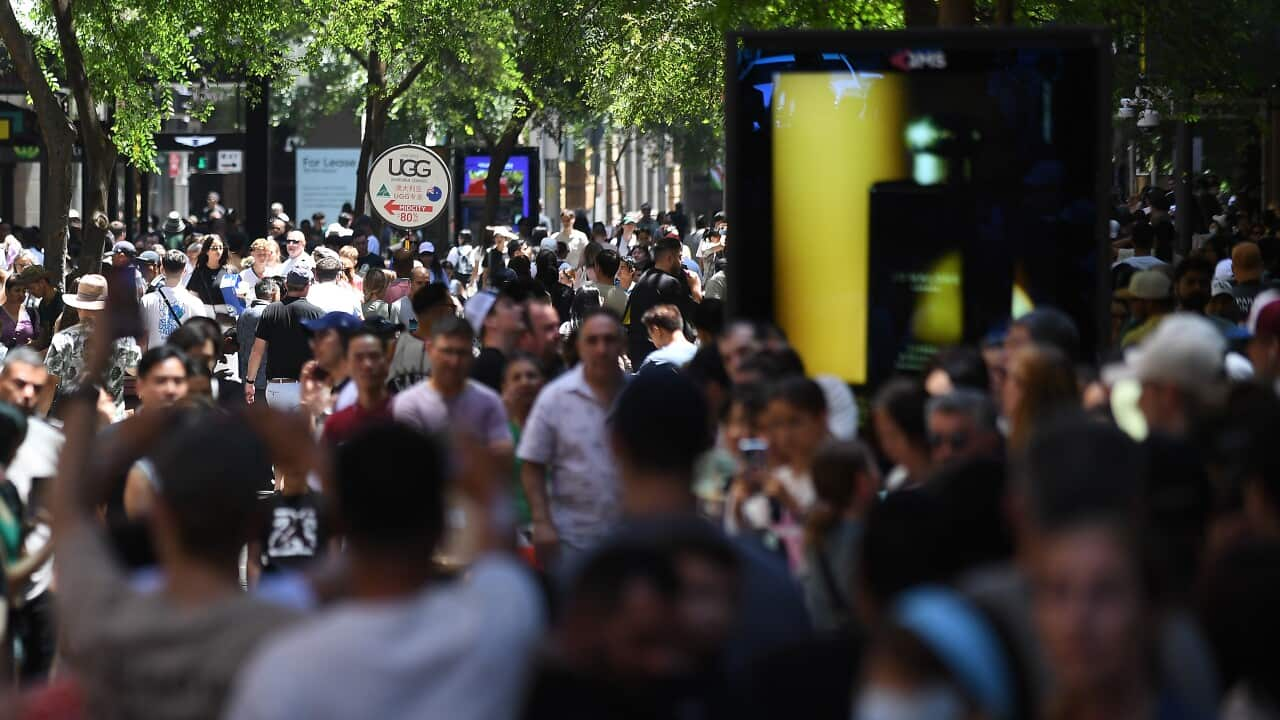TRANSCRIPT
In Morocco's northeastern city of Jerada, illegal coal miners continue to risk their lives to make ends meet.
In 1927, the one and only coal mining plant was founded there - 40 kilometres west of the Algerian border.
Since the 1920s, coal mining has been the bread and butter for that North African community.
But in the late 1990s, the Moroccan government decided to shut Jerada's mines, leaving around 9,000 workers unemployed.
So, what's it like now?
Although it was formally closed for almost three decades, the mines serve as an important source of income for a majority of its residents still there.
“When I arrived there was really difficult for me because I was the only one from outside. And when I arrived I saw a funeral happening - it was a little bit chaotic I will say.”
In an exclusive interview, SBS News spoke to David Tiago Barbosa, a photojournalist from Portugal.
He was there in 2023 to document the harsh realities facing these miners.
Mr Barbosa reflects on his first impression of Jerada.
“They were working in the mines but without safety - very dangerous. They were going inside with not harness, they were using a bag, a corn bag, and they attached the corn bag to the rope.”
He was about to enter the coal mine to document their work when this happened.
“A big coal bag coming outside and almost falling. So I took the pictures two, three seconds before the bag broke and almost hit two miners there. So they said to me that was very dangerous to go inside.”
He says depending on the area, it could be as deep as 15-40 metres, and as wide as 100 metres horizontally.
“The mines are still closed officially, but illegal mining continues, like in secret, mining shafts are dug by hands without safety equipment, without oxygen, without emergency help. And people know they can die at any moment, but they have no other way to feed their families. Some government projects were promised, but the poverty, it's still there.”
That's Mr Hamid - Mr Barbosa's local fixer in Jerada.
According to local reports, three people died in 2022 from carbon dioxide suffocation inside a well for collecting coal.
The story of coal miners putting their lives at risk to make ends meet has been under-reported in the media.
In 2017, large protests erupted in Jerada following the deaths of two brothers aged 23 and 30 inside a mine.
Just last month, the country's Finance Minister Nadia Fettah Alaoui announced Morocco will adjust its upcoming budget to prioritise spending on health and education, as well as allocate some additional funds to reduce regional inequalities.
A few days after that, the Powering Past Coal Alliance announced Morocco plans to phase out coal entirely by 2040 if it secures international climate finance.
Morocco's energy minister was quoted saying the country has stopped planning for new coal power plants.
SBS News has contacted the relevant organisers and ministries in Morocco for a comment, and is yet to receive a response.
But the locals in Jerada remain sceptical this will change the situation for their community.
David Tiago Barbosa's project titled 'Jerada: The Valley Of Resilience' - which was awarded an honourable mention by the International Photography Awards (IPA)* - was only recently published.
He recalls being under surveillance during his time there, fearing for the safety of his fixer, Hamid.
“A police guy went there and started asking for us, asking for what we were doing there. Because I was afraid to them taking my pictures and my SD card.”
Thankfully he had his images backed up to his hard drive.
During his stay, he met Youssef, a 25-year-old who had been working in the mine since he was 14 and who was already suffering from lung disease.
“He said to me that he started working when he was 12-years-old and his father was working in the old factory. And then when the factory closed, he started working as illegal as well. And the father was with lungs with 100 per cent with silica. So it was really bad and using a mask for breathing and Youssef also started to be really bad with silica problems on the lungs as well.”
Youssef has since been arrested in Algeria, while trying to cross by boat to Spain, in search of a better life.
So, what is silica dust, and how is it produced?
Lung Foundation Australia CEO, Mark Brooke discusses the health implications for the community living and working at these mines.
“Silica dust and other forms of hazardous materials in industries that are, for example, mining industries are produced when we are cut through or shape or somehow grind in the extraction of those minerals and we create dust in the air and that dust may contain or is most likely going to contain particulates that are harmful for your lungs.”
He talks about the harmful effects of silica dust on one's health, and why are coal miners largely at risk.
“What we do know in Australia, we had an outbreak of coal miners lung disease or black lung about 15 years ago, which was a resurgence of a disease that we had not seen for some time.”
He says that was caused by a whole range of factors, including poor regulation and surveillance, a lack of issuing proper personal protection equipment, and the response from mining corporations to their workers' safety.
“Since that time, we've put in place really strong and strict measures that do their very best to protect coal miners and miners, lung health and their health more broadly. And that's because of union campaigns. It's because of organisations like the Lung Foundation and the Thoracic Society working together to really highlight how dangerous dust in workplaces can be.”
He says black lung disease as a disease was always thought about as an accumulation. So it essentially can be someone working in these mines for many years but not seeing the immediate effects.
“One of the things we know about black lung disease is that often the diagnosis takes place in later years. Increasingly now, as we have seen with the rapid uptake, the rapid number of patients showing with silicosis in Australia that subject to the manufacturing process, the type of stone being extracted, the cutting tools used the level of personal protection issued to the employees.”
Mr Brooke says we're increasingly seeing - not just here in Australia but around the world - that the length of time being exposed is shrinking dramatically as people who have only been exposed for a year are showing up with significant lung diseases.
He shares his thoughts on what developing nations can do to prevent this.
“The World Health Organisation has recently published a global resolution on lung health. And one of the areas that the New World Health Organisation resolution on integrated care and lung health speaks to is occupational exposures. Every country around the world should be looking at its occupational exposures and lung health and putting in place the frameworks, regulations, and policies and procedures.”
Stephen Smyth is the Mining and Energy Union General's Vice President in Australia.
He tells SBS News one of the first requirements in all countries for any mining sector anywhere in the world in relation to health and safety - in particularly developing countries - is the adoption of ILO 176.
And what's really alarming is a lot of countries have not adopted the ILO 176.
“Certainly alarming what they're using to be able to get themselves to work without having actually seeing or experienced what they're doing. You're really alarmed. The fact that if they're using, in my words, primitive measures - you'd have to say the working conditions in the mine themselves would be atrocious, would be dangerous. And we certainly lack the basic health and safety legislation, but requirements of to do the job.”
He says despite there being room for improvement in Australia - it has one of the world's leading practices in relation to health and safety - and uses all mechanical machinery.
“If you compare it to Australia or other countries, we have standards for lifting devices, standards for slinging, harnessing all those mechanisms as well. So certainly alarming and concerning that workers are putting their lives at risk just getting into the mine, let alone working in tough, hazardous, dangerous conditions each and every day.”
Human rights groups have echoed similar sentiment in the past - defending protesters in the eastern city of Jerada.
Mr. Hamid shares the realities of the miners on the ground.
“Many young men have died in this mines from flooding, explosions, collapsing tunnels, lack of oxygen. Families are left without fathers, brothers or sons.”
He says even young girls work at these mines.
Although women can't work inside the mines, they can help to select the coal.
“Even some, girls between 12 to 16 they go to work there and about if there is insurance, no, some help from the government. No, no protection, nothing.”
Some people have left to Oudja in eastern Morocco to work.
But Mr Hamid says most of them stay because it's their homeland and they have nowhere to go.
“So the community survives by depending on each other. So sharing food, money and support. Some families collect coal and sell it to the middleman. So the one that it suffers, they don't earn much, but the middleman, he's the one that earns much without doing any job. He's just like buy and then he sells again.”
He says the locals want real jobs, not empty promises from the government.
“They don't want to die in this holes. They don't want factories, projects, or legal mines with safety and rights. They want to work with dignity, not in fear.”
Adding they are left with no choice.
“No one is happy doing this. The go underground, because they don't have a choice. Every time they enter a mine, they say goodbye to their families. It could be the last time. So they work with fear, not with hope.”
He says a miner can earn between 60 Dirham or ten dollars and 120 Dirham or $20 dollars per day - depending on the amount of coal they extract.
Mr Hamid says the money that they earn is enough for basic necessities such as bread, sugar, food and rent to survive.
The plant that was built was a contract between a Chinese company and the Moroccan government worth over $465 million dollars.
The plant already exists -- as photographed by Mr Barbosa -- with the cemetery in the foreground.
This company created some jobs, but not enough to employ the greater number of people who continue to have no other option and work illegally, risking their lives.
“The Chinese company is different because it was a huge investment there and the thing was a new factory, but they didn't have a lot of jobs. So for example, 90 per cent of Jerada is illegal miners and maybe with a new factory, just 10 per cent have a job on the Chinese company. And the other percentage, some people said it was European companies that went there and just say, hey, if you want to earn more, I can give you some tools and you can extract and give to me.”
Mr Hamid says the danger never stops.
“Some of them, they just use kind of a turban or something. There is no oxygen. The tunnels, they collapse, flooding kills minors. There is no hospitals or emergency teams, no legal protection or insurance. And the police chase them because it's illegal and that it happened to me personally when I was with David.”
Mr Barbosa echoes a similar sentiment.
“They don't have, like for example good medical centre, if they have problems with silica problems, they need to go to Casablanca or another big city to have treatment.”
Mr Hamid again, quoting a miner in Jerada.
“My friend who lives in Jerada, he just told me that they have a phrase that they say there. They say we dig our own graves to survive.”
The International Mining Congress this year will be held in Morocco from the 24th to 26th November.
[ David Tiago Barbosa has been awarded an honorable mention by the International Photography Awards (IPA), in the category of Editorial / Press Essay / Feature Story for his project - Jerada: The Valley of Resilience. ]


